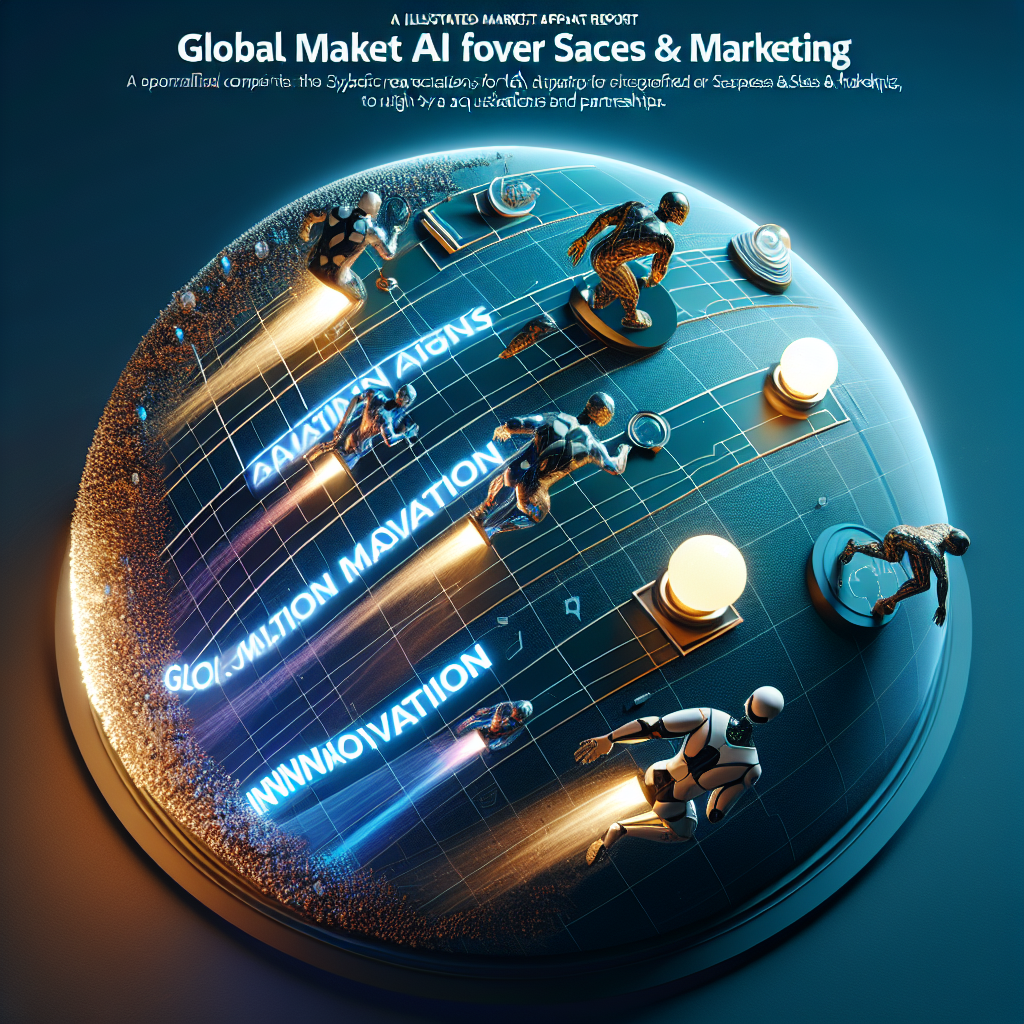
In the ever-evolving landscape of business, the role of artificial intelligence (AI) is becoming increasingly pivotal, particularly in the realm of sales and marketing. The newly released report titled “AI for Sales & Marketing Market – Global Forecast 2025-2030” sheds light on this dynamic sector, revealing significant growth trends and advancements that promise to reshape how organizations interact with their customers.
The report indicates a substantial increase in the AI for Sales and Marketing Market, which has surged from USD 22.32 billion in 2024 to USD 25.63 billion in 2025. This upward trajectory is expected to continue with a compound annual growth rate (CAGR) of 15.38%, ultimately reaching USD 52.68 billion by 2030. Such figures underline the importance of AI technologies in achieving competitive advantage and driving innovation across various industries.
Artificial intelligence is not just a buzzword; it is redefining the way businesses engage with their prospects and customers. As organizations grapple with increasingly complex data landscapes and heightened buyer expectations, they are turning to AI to ensure precision and personalization in their sales and marketing strategies. The deployment of AI capabilities has emerged as a critical differentiator, enabling businesses to offer tailored solutions that resonate with their audiences.
Key AI applications such as automated lead scoring, dynamic content generation, and predictive customer insights are becoming essential tools in the marketer’s arsenal. These technologies empower organizations to make smarter, faster decisions at every stage of the customer journey. For instance, automated lead scoring allows sales teams to prioritize their efforts on leads that are more likely to convert, ultimately optimizing resource allocation and boosting conversion rates.
Market leaders today understand that leveraging advanced algorithms not only streamlines operations but also unveils hidden growth opportunities. However, the integration of machine learning models, natural language processing engines, and computer vision applications into existing workflows requires a balance of technical capabilities, change management skills, and strict data governance policies. Decision-makers must foster cross-functional alignment to fully harness the power of these emerging technologies, ensuring that all team members work toward shared objectives.
The executive summary of the report provides a comprehensive overview of the current state of the AI for sales and marketing landscape, highlighting transformative shifts in go-to-market strategies and assessing the impact of U.S. tariff policies on market dynamics through 2025. Furthermore, it presents an in-depth segmentation analysis across various components, technology types, organizational sizes, deployment modes, applications, and end-user industries.
Importantly, the report addresses how revolutionary forces are redefining go-to-market dynamics. The advancements in machine learning, deep learning, and natural language processing are fundamentally altering traditional sales and marketing models. Companies that historically relied on manual segmentation are now employing predictive analytics and computer vision technologies to forecast customer needs with unprecedented accuracy.
In conjunction with these developments, generative AI tools create personalized content on a large scale, while advanced recommendation engines and dynamic pricing strategies enhance customer engagement and conversion efficiency across multiple channels. Additionally, integration platforms serve to bridge gaps between various customer relationship management (CRM) systems and customer-facing technologies like chatbots and voice assistants, creating seamless customer experiences.
The insights from this report are invaluable for business leaders, product builders, and investors, providing actionable recommendations for navigating the complexities of the AI for sales and marketing terrain. It also presents a transparent overview of the research methodology employed, ensuring the credibility and relevance of the findings.
As the competition intensifies with tech giants, startups, and specialists driving innovation through acquisitions and partnerships, understanding these trends will be crucial for stakeholders looking to capitalize on the growth potential of AI technologies in sales and marketing. The future is bright for organizations ready to embrace AI, empowering them to navigate the changing tides of consumer expectations and market demands.

Leave a Reply